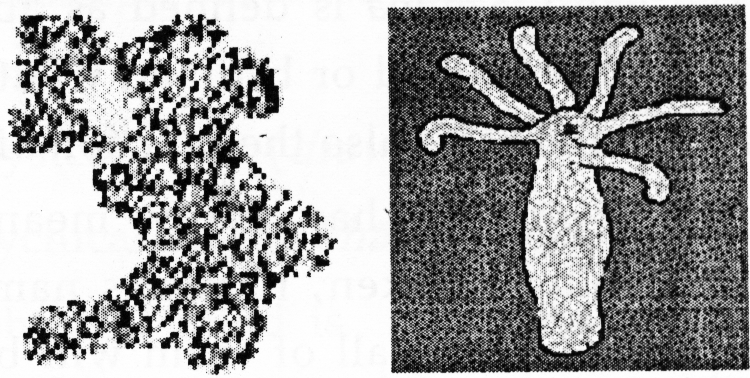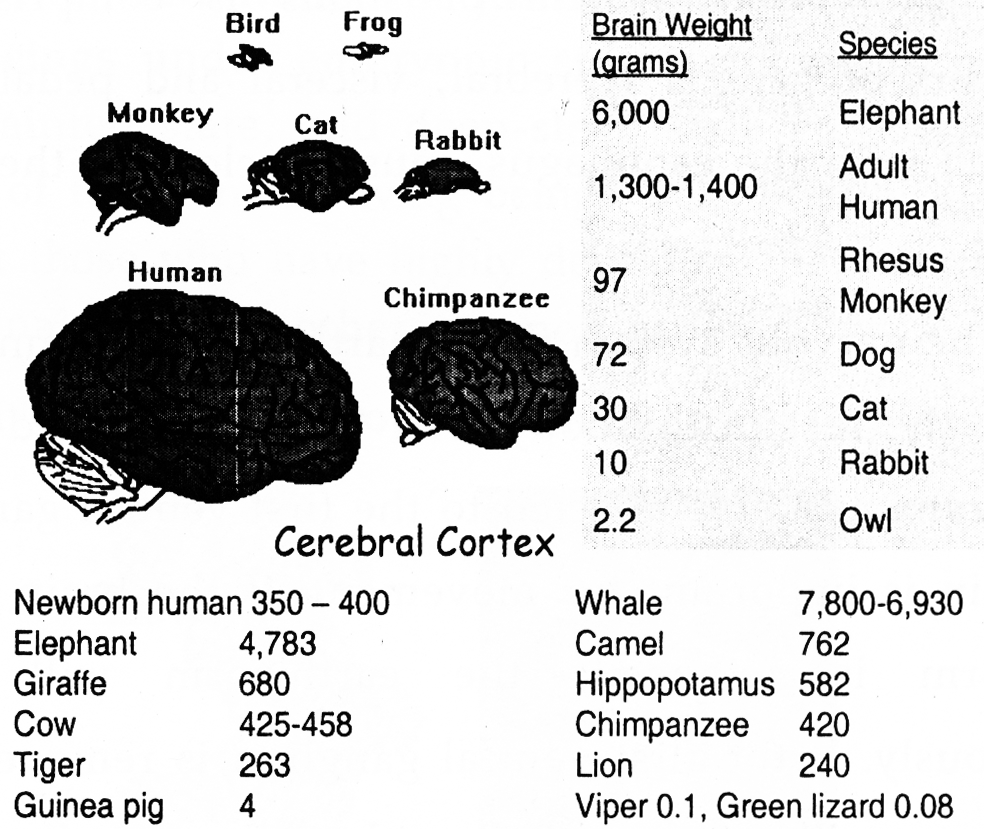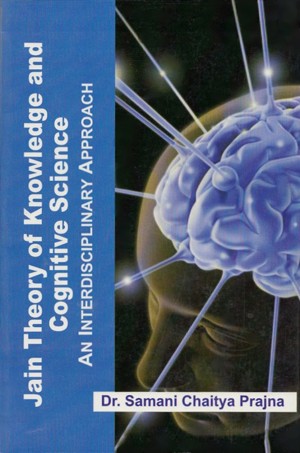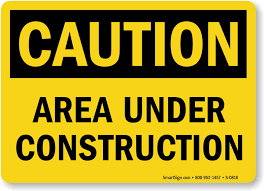There is one more sense apart from these five senses, known as mind. Mind is a means of obtaining cognition but it is not an external means like touch etc.; it is an internal means it is therefore, also known as conscience, inner self. On the basis of the derivation 'mananaṁ manyate anena vā manaḥ', it can be said that pondering over something is mind or that by which the function of thinking is done is mind.
Mind has been defined in the book 'Bhikṣu Nyaya Karṇikā' as ' sarvārthagrāhi traikālikaṁ manaḥ'[53] that, by which all the objects are perceived and that is capable of the cognition of objects of all senses existing in all the three times is mind.
It is possible because Jain Philosophy admits two kinds of minds:
- Physical mind (dravya mana).
- Psychical mind (bhava mana).
The physical mind is a material composition made of molecules of Manovargaṇā[54] But the psychical mind refers to mental modes as thoughts carried out by the material aggregates acquired. A material aggregate related to mind is known as Manovargaṇā. It occupies the whole body. Digambaras admit that the heart its abode and of the shape of a lotus with eight petals[55]. In simpler words, the substantial or physical mind is nothing but substantive matter transformed into mental substance. The physical mind changes and takes various forms according to the impressions.
Functions of mind
The functions of mind is to think, to retain something in memory and to imagine. It thinks about the objects received by senses and also goes beyond that. Mind is the promoter of the perceptual knowledge; mind does not always have to depend everywhere upon the senses to have the knowledge of its object.
According to Jain theory of knowledge, not all living beings possess mind. The living beings endowed with mind (and five senses) are called rational (Saṁjñi) ones. Rational beings are those who possess mind. The word 'Reason' indicates the same meaning as the word mind possession. The word Saṁjña is defined as ability to think and learn about what is good or bad and what are the pros and cons of a system. This is also the function of mind.
The word ' saṁjñi has many meanings. If the conventional meaning is taken, it means name. As all the living beings have a name, all of them will be designated as saṁjñi and nobody could be excluded including non-mind-possessing ones.
If the word 'saṁjñā' means knowledge, it will also involve that all the living beings will have to be called saṁjñi as all have knowledge.
The word 'saṁjñā' also means 'instinct'.[56] The general instincts found in all the living beings are four, they are food, fear, sex and possession. The living beings will be called saṁjñi as instinctive if it has all these four instincts and saṁjñi as rational if it with reason, thought and imagination.
All the worldly beings have these four instincts and therefore, all should be called saṁjñi. This is however, not technically correct. As per Jain technical ideology it is only those beings, that have reasoning mind are rational or saṁjñi. This definition will justify the rationality of the living beings under embryonic stages (in womb or egg-state), fainted state, and deep-sleep state etc. despite the absence of functions in living beings. Scientifically it can be said that those who have highly developed nervous system are rational where as others are non-rational.
Fig. No. 2.10.A. Nervous System in Lower Organisms

For e.g. the amoeba is a single-celled animal and sponges, they don't appear to be sensitive to the environment. They do not have a network of nerves[57] the tiny animal amoeba moves away from light, but it has no photo detectors or eyes. The paramecium, another single-celled animal, also has no specialized sensory structures. However, it avoids cold, heat and chemicals by backing up and moving away.
Fig. No. 2.10.B. Nervous System in Lower Organisms

The nervous system of snails is comprised of three pairs of ganglia (cerebral, visceral and pedal) each associated with the esophagus, muscles close to the shell, and foot.
The nervous system of the earthworm is segmented, just like the rest of the body. The 'brain is located above the pharynx and is connected to the first ventral ganglion. The brain is important for movement: if the brain of the earthworm is removed, the earthworm will move continuously. If the first ventral ganglion is removed, the earthworm will stop eating and will not dig. Each segmented ganglion gets sensory information from only a local region of its body and controls muscles only in this local region. Earthworms have touch, light, vibration and chemical receptors all along the entire body surface. It is more developed when compared to amoeba but still it is not that sophisticated to remember, plan, evaluate and carry out creative actions.
Thus, one can easily see that the nervous system of lower animals is not so well built that they can retain memory of the past and imagine for future. Whereas brains of higher animals as cats, dogs, humans etc. are well developed having distinct brain weights as given below in the fig. no. 2.11.
Fig. No. 2.11. Average Brain weight of different species of animals

Discussing the ability of animals to think can lead to profound philosophical arguments but it is necessary to envisage life without thought. In lower animals with simple nervous system as shown in the fig. no. 2.10, it is possible to understand much of behavior in terms of nervous connections. Life without thought is possible says Mind Alive[58] that if we can imagine life without any conscious awareness of anything at all, then we are probably close to the state which exists in simple animals. Only five-sensed class as shown in figure no. 2.3 can be called as rational or mind-possessing in this respect and one to four sensed beings are non-rational.
To conclude it can be said that the knowledge that occurs though senses and mind is known as perceptual knowledge in Jainism. The classification of this knowledge gives' a holistic model of information processing which would be studied in the next chapter.
 Samani Chaitya Pragya
Samani Chaitya Pragya

